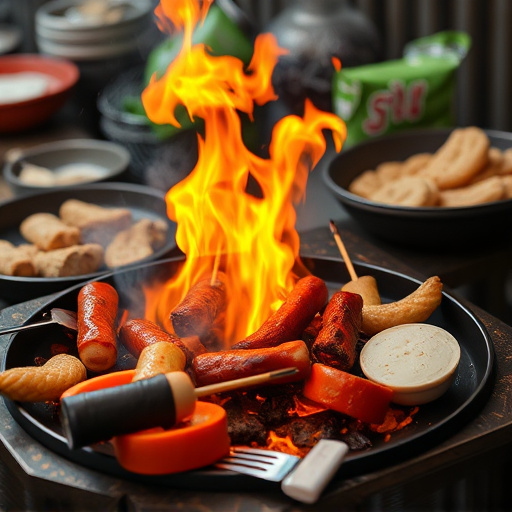This comprehensive guide details the art of preparing perfect BBQ pork ribs using a low-and-slow cooking method. Emphasizing temperature control (225°F – 250°F), slow cooking times (6+ hours), and collagen breakdown, it ensures tender, smoky, juicy results. The text offers insights on rib selection, dry/wet rubs, equipment preparation, optimal cooking conditions, doneness testing, resting ribs for maximum flavor, and the importance of this step in achieving exceptional BBQ pork ribs.
Unleash the tender, juicy magic of perfectly cooked BBQ pork ribs with our comprehensive guide. Discover the power of low-slow cooking methods for exceptional results. Learn how choosing the right cut and mastering seasoning (dry rub vs wet rub) significantly impacts flavor. From setting up your smoker or oven to testing doneness and resting meat, every step ensures mouthwatering ribs. Elevate your BBQ game with this definitive pork ribs recipe.
- Understanding the Low-Slow Cooking Method for Ribs
- The Right Cut: Choosing the Best Pork Ribs
- Seasoning 101: Dry Rub vs Wet Rub for BBQ Ribs
- Setting Up Your Smoker or Oven for Optimal Results
- Mastering the Cooking Time and Temperature
- Tips for Testing Doneness and Achieving Tender Ribs
- Letting Them Rest: The Final Step for Flavor Infusion
Understanding the Low-Slow Cooking Method for Ribs
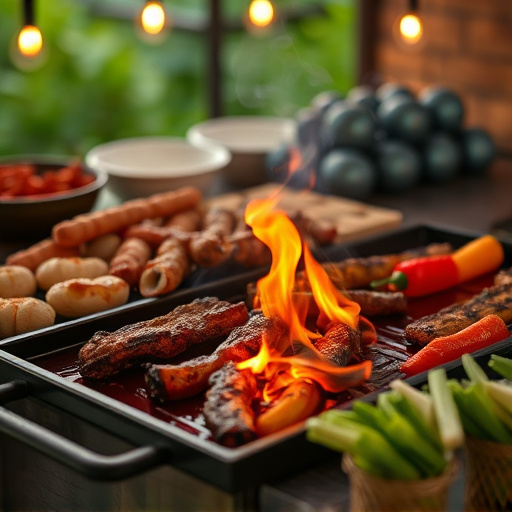
The low-and-slow cooking method is a time-honored technique for preparing mouthwatering BBQ pork ribs recipes. This approach involves cooking ribs at low temperatures (around 225°F – 250°F) for an extended period, often 6-8 hours or more. The key to success lies in patience and maintaining a consistent temperature throughout the process. By slowly breaking down collagen in the meat, this method results in incredibly tender ribs with a deep, smoky flavor that permeates every bite. It’s not just about cooking; it’s about transforming tough cuts of meat into culinary delights.
This technique allows the ribs to cook evenly, ensuring that the interior reaches the perfect level of doneness while the exterior develops a crispy, caramelized edge. The low temperature might seem slow, but it’s this very gentleness that encourages the natural juices to remain trapped within the meat, keeping it moist and juicy. This method is ideal for rib enthusiasts who appreciate the art of slow-cooked perfection, resulting in ribs that simply fall off the bone with every bite.
The Right Cut: Choosing the Best Pork Ribs
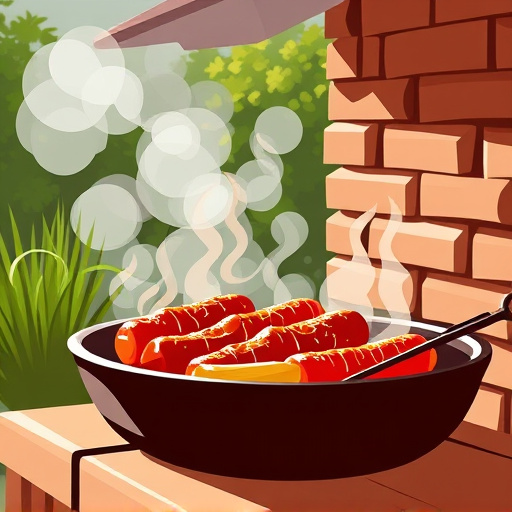
When it comes to cooking BBQ pork ribs, the first step is selecting the right cut. The most popular choice for slow-cooking is the baby back rib, which features a good balance between meat and bone. Look for ribs with a thin layer of fat cap over the meat; this will help keep them moist during the low-and-slow cooking process. Avoid cutting the membrane that attaches the meat to the bone; instead, score it gently to allow spices and sauces to penetrate better. A quality BBQ pork ribs recipe starts with choosing the ideal cut for your rib-cooking adventure.
The beauty of slow-cooking lies in transforming tough, stringy muscle into tender, juicy goodness. The low temperature and extended cooking time break down collagen, a protein found in meat, converting it to gelatin. This process results in ribs that practically fall off the bone, satisfyingly so for any barbecue lover. So, if you’re aiming for the perfect BBQ pork ribs recipe, don’t skip this crucial step—selecting the right cut and preparing them properly will set the stage for a mouthwatering culinary experience.
Seasoning 101: Dry Rub vs Wet Rub for BBQ Ribs
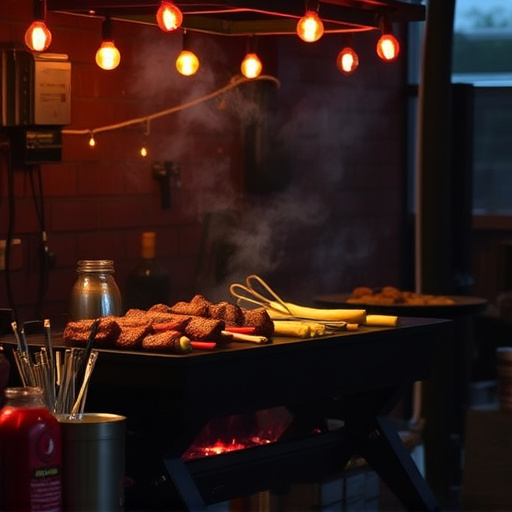
When it comes to seasoning your BBQ pork ribs, choosing between a dry rub and a wet rub makes all the difference in the final dish. A dry rub is a blend of spices that’s directly applied to the meat, creating a flavorful crust and penetrating the meat to enhance its natural juices. This method allows for a diverse range of spice profiles and is ideal for cooking ribs low and slow, as the dry rub sticks around, providing continuous flavor infusion during the long cook.
On the other hand, a wet rub incorporates ingredients like vinegar, sauces, or fruit juices, offering a richer, more complex taste. Wet rubs tend to be used towards the end of the cooking process to add moisture and a glossy finish to the ribs. While they can be delicious, wet rubs may require more frequent applications during slow-cooking to maintain their effect, as the liquid components can evaporate over time.
Setting Up Your Smoker or Oven for Optimal Results
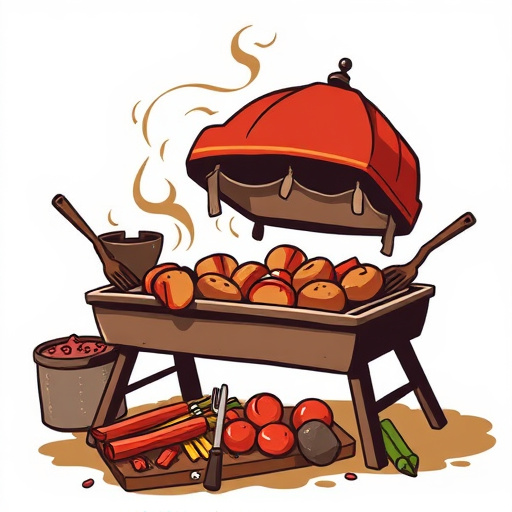
To achieve the best results with your BBQ pork ribs recipe, setting up your smoker or oven correctly is crucial. Preheat your smoker to a consistent low temperature, typically between 225°F and 250°F (107°C to 121°C). This slow cooking allows the meat to break down, ensuring tender, juicy ribs. Use a combination of wood chips or chunks for smoke flavor—apple, cherry, or hickory are popular choices for BBQ pork ribs recipe enthusiasts.
In an oven, set it to the lowest possible setting and use a rib rack or a similar setup to elevate the ribs above any liquid in the pan. This prevents them from direct contact with moisture, which can prevent crispy, caramelized edges. Rub your ribs generously with your favorite dry rub before placing them in the smoker or oven, allowing the spices to penetrate the meat for enhanced flavor.
Mastering the Cooking Time and Temperature
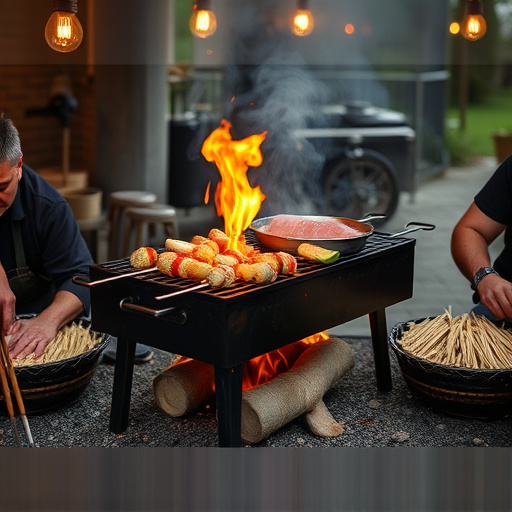
Mastering the cooking time and temperature is key to achieving tender, juicy BBQ pork ribs in a low-and-slow method. The ideal range for slow-cooking ribs is between 225°F (107°C) and 250°F (121°C). This gentle heat allows the collagen in the meat to slowly break down, resulting in incredibly tender ribs. Cooking times can vary significantly depending on the size and thickness of your ribs, but generally, it takes around 3-4 hours for full tenderness. A good rule of thumb is to check the ribs after 2 hours and continue cooking until the meat easily peels away from the bone.
Using a reliable meat thermometer is essential to ensure you reach the perfect internal temperature of 195°F (91°C) to 203°F (95°C). This slow and steady process ensures that the ribs remain moist and flavorful, creating the ideal BBQ pork rib recipe.
Tips for Testing Doneness and Achieving Tender Ribs
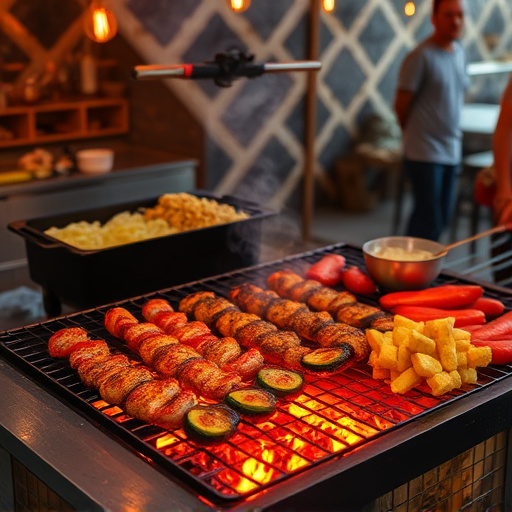
Testing the doneness of your BBQ pork ribs is crucial for achieving tender, juicy results. The best way to check if they’re ready is by using a meat thermometer. Insert it into the thickest part of the rib, ensuring you avoid the bone, and aim for an internal temperature of 203°F (95°C). This is when the collagen in the ribs has converted to gelatin, making them incredibly tender.
To ensure uniform doneness, consider wrapping your ribs in foil after 4-5 hours of cooking. This process, known as “resting,” allows the juices to redistribute, enhancing the flavor and tenderness. Keep an eye on the thermometer, as resting can add another layer of deliciousness to your BBQ pork ribs recipe.
Letting Them Rest: The Final Step for Flavor Infusion
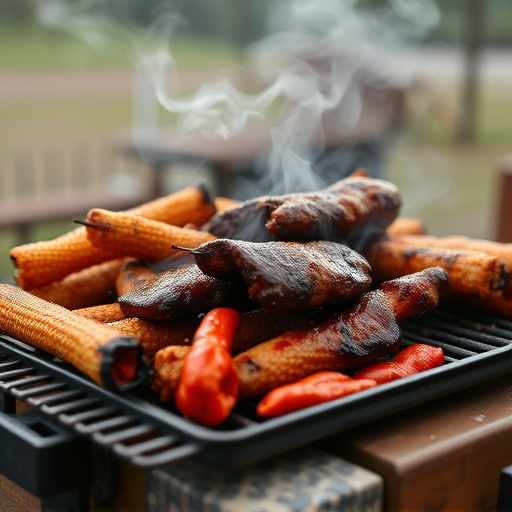
After slowly cooking your BBQ pork ribs until they’re tender and juicy, the final step in unlocking their maximum flavor potential is to let them rest. This resting period allows the juices to redistribute throughout the meat, ensuring every bite is succulent and flavorful. During this time, the internal temperature of the ribs continues to rise slightly, sealing in those mouthwatering juices.
Imagine it as a chance for the ribs to catch their breath and absorb all the delicious aromas from the low-and-slow cooking process. This simple step can make a significant difference in the overall taste and texture of your BBQ pork ribs recipe. So, resist the urge to serve them immediately; let them rest for about 10-15 minutes before slicing and dishing up. Your patience will be rewarded with a truly exceptional BBQ experience!
